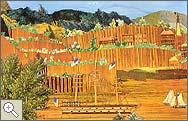|
|
 |
 |
 |
 |
 |
Some lesson plans are only available in Adobe Acrobat format. Get the reader. |
|
 |
 |
|
|
 |
 |
 |
 |

Washington's Head-Quarters 1780. At Newburgh, on the Hudson,
|
 |
 |

by an unknown artist,
after 1876.
Smithsonian American Art Museum, gift of Herbert Waide Hemphill, Jr., and museum purchase made possible by Ralph Cross Johnson.
This image is from the lesson plan Revolutionary Money.
|
 |
 |
 |
|
|
|

